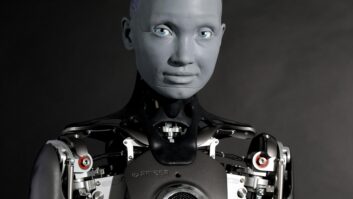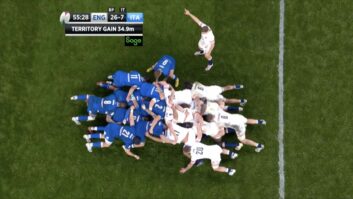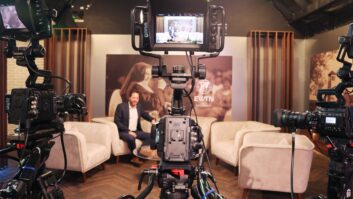Martin Lewis has been dubbed the ‘most trusted man in Britain’ because of his financial expertise and the advice that he and his team provide via his MoneySavingExpert website and his TV appearances, including his own primetime ITV series The Martin Lewis Money Show.
MultiStory Media, part of ITV Studios, produces the programme which is now on its tenth series. I am the production executive and work across all the key aspects of this production, which varies between pre-recorded and live shows.
Back in March, before any UK social distancing requirements and lockdown were put in place, my team was commissioned to produce a one-off Martin Lewis Money Show special looking at Coronavirus issues. As the virus started to dominate the headlines, it was clear that people wanted information and we started being inundated with questions from viewers.
As the first programme proved popular, 15 shows in total were commissioned. We produced the first three episodes from our studio in White City, London, but when a full lockdown was put in place across the UK, we knew we had to work very differently, remotely producing the show to keep the team safe. We took this decision in the space of an hour and we had very, very little time to work out how we would do it.
The team behind the show, including series producer Clare Miller and production manager Anthony Chuck, got together with series director Richard Jack and started working out how to make an entertaining, informative programme with no live audience, social distancing, and limited access for production.
Martin already contributed to other ITV Daytime shows via FaceTime, Zoom and Skype and we did wonder whether we could expand that setup for his live programme, but it very quickly became apparent this wouldn’t work at all from both quality and resilience perspectives.
We work very closely with ITV Daytime in that we share their studio space. The ITV Daytime technology manager, Tim Guilder, helped us reach out to Jeff Williams, owner of technical services supplier MediaSat. Jeff is very familiar with ITV Daytime and is someone with whom various members of MultiStory Media have worked over the years.
Via a long-term relationship with LiveU and its UK partner Garland Partners, both Tim and Jeff are familiar with LiveU’s live streaming/encoding technology, having used it extensively.
This was central to what we ended up deploying. Richard Jack, the series director, is also very technically astute and has worked closely with both Tim and Jeff previously in ITV Daytime.
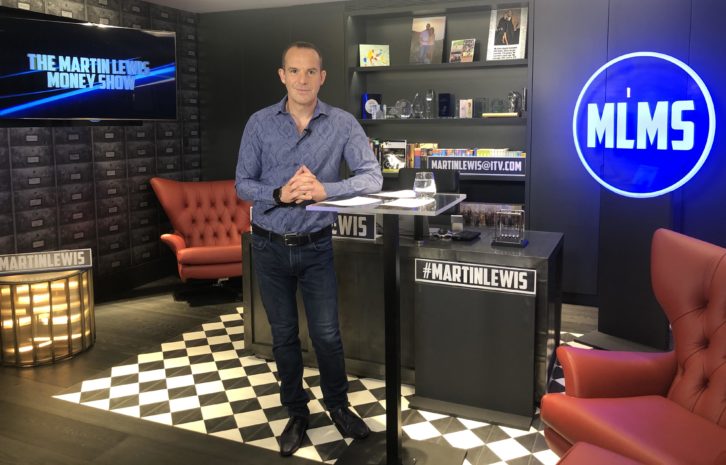
With Martin deciding to broadcast from home as lockdown continued, the team had to devise a way of creating a studio in his home. His home office actually worked really well. Anthony Chuck explains, “Clare, Richard and I did a virtual recce of Martin’s home feeding back to Tim and Jeff. The first week we produced the show remotely we used a very simple set up and it was up and running in a day-and-a-half. The technology we used grew across the series as we came to understand more what we could do, but all the essentials were there from the outset. The day before that first show we did a full tech rundown/rehearsal and we were so happy it worked.”
No members of the crew were allowed to be stationed in Martin’s office for the filming, so Jeff decided to produce it using remote cameras. He says: “I had used these previously, mainly on live events – concerts and conferences – but never in a live TV environment. We also decided on using LiveU for the feeds from Martin’s house.”
The number of cameras used meant that Jeff needed to use two OB units with a camera controller sitting in the second truck outside Martin’s house in London, with two LiveU LU300 units in the main truck.
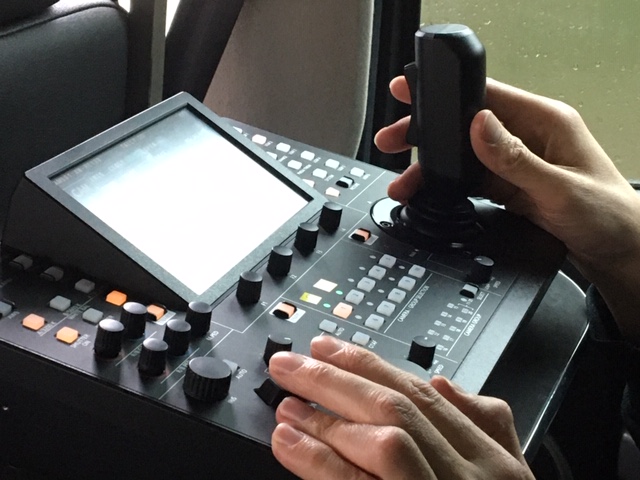
Jeff says, “All of us had one opportunity to go in and set this up for social distancing reasons. As mentioned, the set up did grow across the series (which in total numbered 15 episodes) as we all learnt what was possible. But in terms of his house, we really had the one opportunity as we couldn’t keep going in and out.
“Things that you would normally take for granted, we couldn’t. We had to anticipate any problems. Apart from the cameras, we put two of everything in there: radio mics, floor mics (wired) in case there was interference on the radio mics for any reason and so on. We also had to set up an uninterruptible power supply.”
The remote cameras were cabled from Martin’s office, through a window and out to the trucks. The equipment was then connected in the garden while adhering to safety requirements.
Jeff says, “We have a lot of experience with IP encoders, especially LiveU, not only across cellular networks but also using LiveU with Ka-Band. This is a very powerful combination. It came as a surprise to us, but where Martin lives there was almost no 4G connectivity so we used Ka-Sat dishes, one on each truck, with the two LiveU LU300 encoders (HEVC) connected, and ITV producing the show remotely. It all worked exactly the way it should.”
Martin’s wife, Lara, ended up acting as floor manager/tech assistant – and became the backstage star of the show in doing so by making sure that Martin was where he needed to be, when he needed to be. Lara helped with mics, the comms kit, changing the batteries in the radio mics and IFB kit – key tasks that needed to be quickly handled.
Every time the show was broadcast, we tried to make it look a little more slick than the last one. For example, we wanted Martin to be able to move around naturally so we worked on organising two-ways with co-presenter Angellica Bell, who was in the studio, as well as DTL (down-the-line) interviews. She was chatting to him, feeding him questions that came into the studio via social media. We also fed interviews with government officials like the head of HMRC into his home studio, done via online meetings portals, which were fed through studio to him and then back to the studio to edit together.
Anthony says, “One key setup that grew over the weeks was around Martin’s ‘News You Can Use’ segment. In a conventional setup, he uses a big screen in the studio and runs through bullet points of news from the week. We wanted to bring this to his house and luckily, Martin already had a Plasma screen in his home office that we could use. In studio the big screen visuals are operated and changed by the vision mixer and graphics operator but Martin’s screen wasn’t connected to our gallery, so we had to come up with a workaround.
“The graphics operator in the studio remotely controlled a laptop in Martin’s house and the operator could then run both the screen in the studio and in Martin’s house simultaneously. It wasn’t an ideal solution as the latency impacted us slightly, but as a workaround it worked. Like anything the more we broadcast the segment, the better it got. We had to make some compromises but editorially this worked.”
We couldn’t use autocue so we really had to rely on Martin and his presenting skills. Clare and Richard could talk to Martin via IFB to his in-ears to prompt him what was coming up next, as well as being on talkback to Lara who could assist.
Technology was very much our friend here. As Clare says: “We had to put our trust in the technology and those who had used it. With LiveU I am now absolutely a convert.”
This is a point that Jeff backs up. He says, “I really do fly the flag for LiveU as well as the support provided by Garland Partners – there’s a huge amount you can get out of the technology and we can do this at previously unimaginable price points. HEVC is crucial here too; in terms of the quality/bandwidth situation it is a very significant advance.”
The key point is that the standard of the programming delivered by MultiStory Media to ITV was never compromised from week to week. It worked and I’m very proud of what the whole team achieved – and also the fact that we won a 2020 TV Choice Award for Best Lifestyle TV Show!




